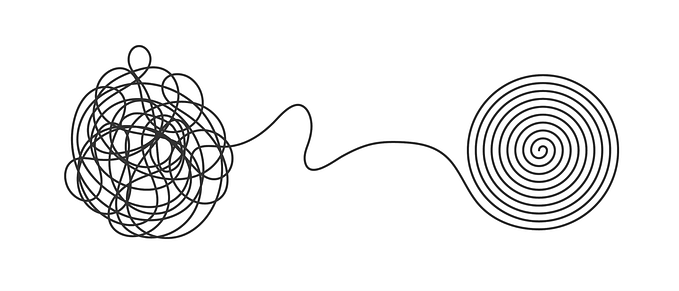Five User Research Techniques & Tips
User research is one of the most important aspects of developing a user-focused design: It gives you valuable insights into the user experience, shapes your product design, and ultimately helps you deliver a better product. By conducting user testing early in the design process, you can ensure there’s a demand for your product and create designs that are actually relevant to users. With the various techniques you can use, it’s necessary to select the right method that can bring the most value to your UX projects. Wondering which type of user research method to choose? Here are five user research techniques and tips for optimizing your testing results.
1. Contextual inquiry
Contextual inquiry is an effective UX research method that involves observing participants in their natural habitat while interacting with a product. In a contextual inquiry, the UX researcher observes how participants perform certain tasks in context and asks about their interactions. This differs from a typical interview because participants are questioned in their own environment, which helps designers better understand how they are actually using the product.
Why use contextual inquiries?
Contextual inquiries are generally used at the beginning of the design process to help define design requirements and learn what is important to users. Testing in a contextual environment helps UX designers:
- Gain richer insights about users. Observing the user’s contextual journey can give you unique insights that you may be unable to obtain from an interview setting alone.
- Identify unmet user needs. You can analyze how customers are currently using your product or service to reveal unanticipated use cases that can help you better design your product.
- Capture how users solve issues. Getting more insight into what problems users are having and how they go about solving them can help you fix design flaws and improve the user experience early in the development stages.

Tips for conducting a contextual inquiry
It’s important to gather accurate information when conducting a contextual inquiry. To better capture observations and collect data, keep these practices in mind:
- Stick to the four principles of contextual inquiry. Ensure testing goes smoothly by using these core principles to guide you:
- Focus — Before going into a contextual inquiry, have a clear understanding of your purpose. This helps guide the user’s interactions relevant to the project’s scope.
- Context — The contextual inquiry should be conducted in a location where the participant would habitually use the product to obtain the best results.
- Partnership — This type of testing is based on a high collaboration between the interviewer and participant. The researcher should work together with the participant to better understand the user journey and how they use the product.
- Interpretation — Review your findings closely with the participant after testing to interpret the data correctly, validate observations, or expand upon any findings to produce the most actionable insights.
- Prepare questions ahead of time. To compile a list, start by establishing why you’re doing the inquiry and what you want to find out from the participants. Ask the same core questions to gather the best quantitative data along with any clarifying questions they may have.
- Record the session and take photos. With permission from the participant, you’ll want to record the entire session to review and assess what you’ve observed and learned. It’s also a good idea to take photos to help capture key issues and bring the customer’s story to life.

- Take detailed notes. To better understand the user experience, write down as many details as possible about the user’s surroundings and interactions. Include direct quotes from participants and interesting observations to fully understand testing results.
2. Moderated usability testing
Moderated usability testing is a user research method that involves the active participation of a moderator. With moderated testing, the facilitator works directly with the test participant, guiding them through the tasks and any challenges they may have. These tests can be performed either in-person in a testing environment or remotely through video conferencing and screen sharing.

Why use moderated usability testing?
Moderated testing is often used in the earlier stages of development when exploring design concepts. This allows designers to better understand user behavior, discover any pain points, and validate design concepts. Moderating testing is beneficial when you need:
- Greater control in a testing environment. This testing allows more guidance and opportunity for moderators to ask questions to clarify issues and better understand user behavior.
- More engagement from test users. The high level of interaction between the researcher and test participants increases engagement and motivates the user to complete tasks.
- Specific testing for complex interfaces. The moderator can facilitate testing by helping users to accomplish difficult tasks when the product has a high learning curve.
Tips for conducting moderated testing
To be an effective moderator, you need to be able to oversee various aspects of testing while building a relationship with the participants. Here are a few tips to follow during moderated usability testing:
- Listen to your participants. Find the correct balance between listening to participants and taking the lead during testing. Listen to your users and encourage them to talk through the challenges to successfully complete tasks.
- Identify and respond to non-verbal cues. Learn to identify cues and adjust the way you interact with the participant to better interpret their responses to questions and tasks.
- Record the session. Be sure to record the user’s interactions and their screen so you have an accurate account of the testing. This will enable you to provide evidence of your findings that you can share with the team to validate design decisions.
- Take notes during the testing. Write down key issues and interesting observations, both positive and negative takeaways. If moderating, consider having someone else write down observations so you can be fully engaged with the participant.
3. Tree testing
Tree testing is a simple technique used to evaluate your site’s structure when developing a design. The hierarchy of a site is generally broken down into categories and subcategories that branch out from the home page like a tree. In tree testing, only the text version of the site is given to test participants, who are then asked to complete a series of tasks to locate items on the site. These sessions are typically short, lasting 15 to 20 minutes.

Why use tree testing?
Tree testing is a simple and effective way to make improvements to the site architecture based on where users expect to find content on your site. Tree testing enables teams to:
- Identify navigation issues. Researchers can analyze user behavior to detect architectural issues, improve findability, and make navigation more intuitive.
- Perform tests without an existing platform. Tree testing can be done very early in the design process since you don’t need a fully developed platform to begin testing.
- Deliver fast and effective results. The technique allows you to quickly test categories and labels with your users. You can also test variations of the site structure, compare the differences, and make effective design decisions based on the results.
Tips for conducting tree testing
To conduct tree testing, you should have the site structure ready to go, specific tasks for your user, and key measures to analyze data. Use these guidelines when doing tree testing:
- Use a complete tree. Your tree should include a complete list of your main content categories and subcategories, and not exclude any sections. Even if you have a specific area of focus, you’ll want to make sure your audience understands the differences between all categories to obtain the most accurate results.
- Prepare a set of tasks. Each task should test a category label by asking the user to find an item within that category. Include tasks that target key website goals, such as finding a feature product. Create the tasks in a way that your participants would naturally use your website.
- Keep test sessions short. Tree testing should only last 10 to 20 minutes with no more than 15 to 20 tasks. If participants become overly familiar with the site structure, the testing outcome can be negatively impacted.
- Use key measures to analyze the data. Using quantitative measures to accurately capture how users understood your categories to analyze the performance of the site architecture:
- Directness — Percentage of users that complete the task without hesitation and the answer correctly the first time
- Success — Percentage of users that completed the task
- Time — Amount of time for users to complete the task
- Use tree testing tools to analyze data. Online tree testing tools like Treejack and Userzoom can give powerful insights into data to help build a more intuitive site architecture.

4. Guerilla testing
Guerrilla testing is an informal way to test ideas, get valuable feedback, and find usability issues. It can be conducted at any number of locations, from cafes to shopping centers. This ad hoc user research technique is conducted simply by setting up shop in a public location and asking people to participate. For best results, testing generally lasts 10 minutes and uses 8 to 10 participants.

Why use guerilla testing?
If you’re working with a tight budget or need user feedback right away, guerrilla usability testing is a great option to identify user trends and observe their behavior to improve your UX design. Reasons to do guerilla testing may include:
- You can quickly get answers to usability issues. Guerrilla testing provides fast, sufficient insights to help teams make design decisions. It also allows teams to identify critical usability issues in the early stages of product development.
- It’s inexpensive and easy to do. Guerilla testing is a great option for testing if you are looking for an affordable way to find answers fast. There’s no advance recruiting so it’s easy to execute and use on a regular basis.
- Guerrilla testing is low maintenance. Quick and easy, participants are given just a small series of tasks to complete in a short amount of time. There’s no need to worry about how to record the sessions or getting written permissions to get started.
Tips for conducting guerilla testing
When conducting guerilla testing, keep in mind that your recruits will most likely be a random selection of users who may not be familiar with your product. Determine the goal of your research before doing testing so you can gather the most useful data. Here are some guidelines to follow:
- Be prepared for testing. Have a good pitch, proper location, tasks prepared, a diverse group of candidates, and recordings set up and ready to go before you begin testing.
- Approach people properly. Begin with introductions and make sure your candidate has time to participate. Give some context around why you’re testing. If you have specific criteria for testing, ask questions to determine if the candidate is the right fit.
- Allow users figure out tasks. Don’t lead your users on how to navigate through the site and listen to what they have to say. Once they are done with testing, ask follow-up questions to elicit the best responses.
- Capture your insights smartly. When doing guerilla testing, you’ll have limited time for notetaking. To keep up with each task, consider using a number system to capture the results:
- If the user can perform the task quickly and without difficulty, mark 3.
- If the user can perform the task but has some issues, mark 2.
- If the user could not perform a task, mark 1.

5. Beta testing
Beta testing is a user research method that allows you to gather user feedback for a live product, rather than a concept or prototype. Once your designs are created, you can use a select group of beta testers to assess how they use the product, troubleshoot any issues, and improve the UX design before releasing it on the market. Developers can choose from many types of beta testing, including closed or open beta:
- Closed beta testing — Closed beta is released to a select group of users. It’s well-suited for beta tests that have a limited scope such as testing out new features for a product release.
- Open beta testing — Open beta does not limit access and allows anyone to sign up for testing. This option is ideal when you want to collect quantitative data about your target users and gain a deeper understanding of how your design will be used in the real world.

Tips for conducting beta testing
Identifying the goals of the test and follow these guidelines to ensure beta testing goes smoothly:
- Determine your testing goals. Decide what you need to accomplish before you begin beta testing by setting your primary and secondary objectives. This will make it easier to prioritize and make changes when unexpected issues occur during testing.
- Recruit the right testers. To select the right beta testers, you’ll need to look for strong candidates. That means recruiting at least three to five times more users than you need so you can narrow down the selection to the ones who match your testing requirements.
- Set an appropriate timeline for testing. To achieve your testing goals, it’s important to establish the right length of time to test. If testing is too long, you’ll have lower participation in the later weeks that may affect your results; if your testing is too short, you may not have enough time to fully validate the product or design.
- Use tools for beta testing. Beta test management tools like Buglife and Instabug can help validate your design ideas and streamline the beta testing process.

Conclusion
To create a great UX design, it’s important to have a better understanding of context, the user’s needs, and what makes an exceptional user experience. User research methods help leverage testing and data, with powerful insights into how people are using your product to help drive better design decisions. By evaluating every project from the user’s perspective, designers are able to create more user-focused designs that optimize product performance.
About the author
Kim Purcell is a content writer at Neil Patel Digital. Her extensive background includes writing and editing for publishing, IT, and digital media industries, with a special focus on multimedia content and product development.











